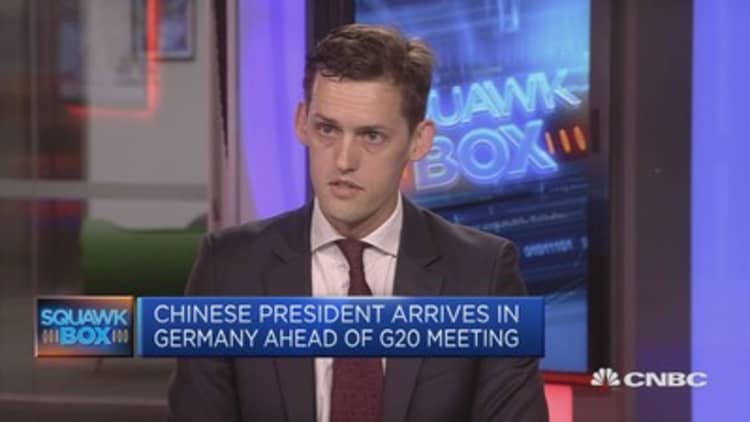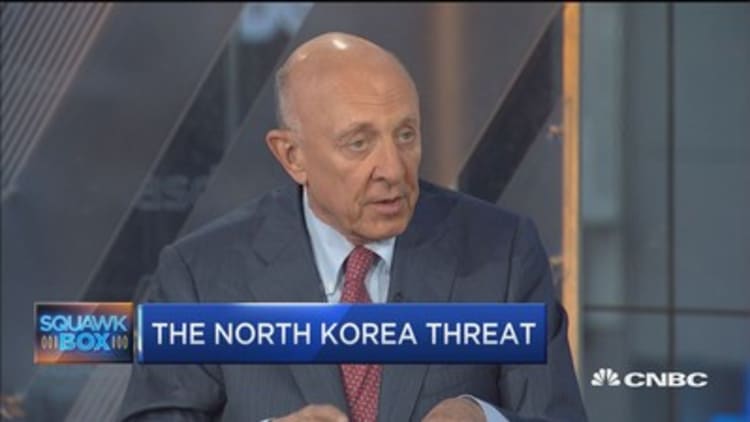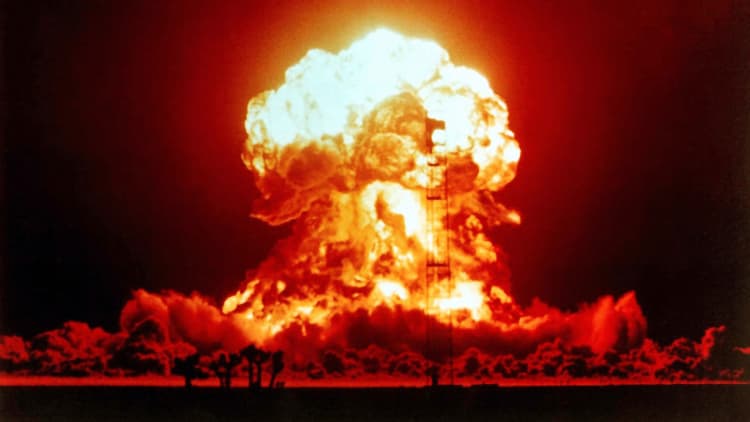
North Korea's claims that it successfully launched its first intercontinental ballistic missile (ICBM) Tuesday are the latest instance of political posturing to emerge from President Kim Jong-Un's totalitarian regime, but they also bring the likelihood of an attack on the U.S. squarely into focus.
Though most experts agree that the closed state does not yet have long-range nuclear weapon capabilities, U.S. Secretary of State Rex Tillerson said Tuesday that the launch indicated a "new escalation of the threat" and analysts see the country's military advancement gaining pace.
Tuesday's tactically timed Independence Day launch is in many ways a minor step forward from a similar test in May, the latest in a series of provocations. The new Hwasong-14 rocket added approximately eight minutes of flight time, or a further 90 miles in overall distance, to its predecessor.
However, the new model is now thought to bring Alaska into range.
This step could significantly increase North Korea's ability of targeting the U.S.'s 48 mainland states – and the timeframe in which it does – according to Jonathan Wood, director, global risk advisory at Control Risks.
"This launch brings forward, or accelerates the timeframe, in which North Korea was expected to develop a longer-range intercontinental capability from perhaps maybe 5-10 years to within 5 years," Wood told CNBC Wednesday.
"While this missile test doesn't necessary indicate that they have a reliable delivery vehicle, or certainly a reliable launch capability, it does mean that we're looking at a timeframe which is less than we may have thought," Wood continued.
"They will be able to threaten the lower 48 states and possibly also be able to mount a nuclear warhead on one of these missiles."

Though the launch indicates the North's increasingly wide-reaching capabilities, which could threaten other neighbouring countries, Wood said that the timing of the test clearly highlighted the U.S., South Korea and Japan as its chief targets.
North Korea's defense forces may hope that the test will provoke a more measured approach from the U.S., which until now has been largely invested in the region under as a guardian of Japan and South Korea.
"By being able to hold U.S. cities at risk, it gives decision-makers in Washington a reason to pause for thought when deciding to strike," Karl Dewey, CBRN analyst at Jane's by IHS Markit, told CNBC via email.
"Although North Korea is unable to match the U.S. in terms of numbers, similar 'minimum deterrence' postures have been held by other nuclear powers including China, France and the UK, with deterrence premised on being able to inflict unacceptable losses, rather than total destruction."
This could prompt increased sanctions and displays of U.S. commitment to the region, according to Dewey.
However, some analysts suspect that the move could provoke a more hard-line approach from the Trump administration, given the president's previous dismissal of the North's military capabilities. In January, the president tweeted that a North Korean nuclear attack on the U.S. "won't happen."
"This ratchets up tensions in the region, almost demands a tough U.S. response - especially rhetorically - and increases the chances of a miscalculation or error that could lead to a catastrophic war," Professor Inderjeet Parmar, of the Department of International Politics at City, University of London, told CNBC via email.
"An ICBM launch crosses a line that Trump had drawn as inviting a robust U.S. response. It means that more measures might result from talks at the G-20 meetings in Hamburg from China and Russia."
WATCH: This former defense secretary is terrified of nuclear catastrophe




